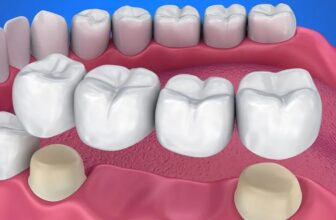
Introduction
In the ever-evolving landscape of health and wellness, understanding the key components that contribute to overall well-being is crucial. Wellness isn’t just about hitting the gym or eating a salad; it’s a holistic approach that encompasses physical, mental, and emotional health. Let’s dive deep into the world of wellness activities and explore how you can optimize your life for peak performance and happiness. Drawing insights from experts and detailed analysis at Vita Diet’s wellness activities guide, this article will provide a roadmap to mastering wellness.
The Five W’s of Wellness Activities
To truly understand wellness activities, we must break down the five W’s: What, Why, When, Where, and Who. Each component plays a critical role in crafting a wellness plan that suits your lifestyle and goals.
1. What are Wellness Activities?
Wellness activities encompass a broad range of practices and habits that promote overall health. These include physical exercises like high-intensity interval training (HIIT), yoga, meditation, mindfulness practices, and nutrition-focused activities like meal planning and detox diets. The goal is to integrate these activities into your daily routine to create a balanced and healthy lifestyle.
2. Why are Wellness Activities Important?
The importance of wellness activities cannot be overstated. Engaging in regular wellness practices can:
- Improve Physical Health: Activities like HIIT and yoga enhance cardiovascular health, build muscle, and improve flexibility.
- Boost Mental Health: Meditation and mindfulness reduce stress, anxiety, and depression, promoting a positive mindset.
- Enhance Emotional Well-being: Regular physical activity and mindfulness practices improve emotional resilience and stability.
- Promote Longevity: A holistic approach to wellness can lead to a longer, healthier life by reducing the risk of chronic diseases.
3. When Should You Engage in Wellness Activities?
Timing is crucial when it comes to wellness activities. Incorporating them into your daily schedule can maximize their benefits. For instance:
- Morning: Starting your day with a yoga session or a brisk walk can boost your energy levels and set a positive tone for the day.
- Afternoon: Midday exercises like a quick HIIT session can break the monotony of work and re-energize you.
- Evening: Practices like meditation and stretching can help unwind and prepare your mind and body for a restful night’s sleep.
4. Where Can You Practice Wellness Activities?
Wellness activities can be practiced anywhere, depending on the type of activity:
- Home: Yoga, meditation, and home workouts can be easily done in the comfort of your living space.
- Gym: For more intense physical activities like weight training and HIIT, the gym offers the necessary equipment and environment.
- Outdoors: Activities like jogging, cycling, and outdoor yoga connect you with nature and provide a refreshing change of scenery.
5. Who Should Participate in Wellness Activities?
Everyone can benefit from wellness activities, regardless of age, gender, or fitness level. Customizing these activities to fit individual needs and preferences ensures that everyone can enjoy the benefits of a wellness-focused lifestyle.
Types of Wellness Activities
Let’s delve into some specific types of wellness activities and their benefits.
High-Intensity Wellness Activities
1. HIIT (High-Intensity Interval Training) HIIT involves short bursts of intense exercise followed by brief periods of rest or low-intensity activity. It’s highly effective for burning calories, improving cardiovascular health, and building strength in a short amount of time. Studies have shown that HIIT can also enhance metabolic health and reduce the risk of chronic diseases.
2. Strength Training Strength training involves using resistance to build muscle strength and endurance. It can be done using free weights, resistance bands, or bodyweight exercises. Benefits include increased muscle mass, improved bone density, and enhanced metabolic rate.
3. Cardiovascular Exercises Cardio exercises like running, cycling, and swimming are excellent for improving heart health, burning calories, and boosting overall endurance. Regular cardio can also reduce stress and improve mental health.
Low-Intensity Wellness Activities
1. Yoga Yoga combines physical postures, breathing exercises, and meditation to promote overall health and well-being. It improves flexibility, strength, and mental clarity. Yoga is also known for its ability to reduce stress and enhance emotional balance.
2. Meditation Meditation involves focusing the mind and eliminating distractions to achieve a state of mental clarity and emotional calm. Regular meditation practice can reduce stress, improve concentration, and enhance emotional resilience.
3. Walking Walking is a simple yet effective way to stay active and healthy. It improves cardiovascular health, aids in weight management, and boosts mood. Incorporating regular walks into your routine can significantly enhance your overall well-being.
4. Stretching Stretching exercises help improve flexibility, reduce muscle tension, and enhance overall physical performance. Regular stretching can also prevent injuries and improve posture.
Creating a Balanced Wellness Routine
To create a balanced wellness routine, it’s essential to incorporate a mix of high and low-intensity activities. Here’s a sample weekly plan:
- Monday: Morning yoga, evening HIIT session.
- Tuesday: Strength training, meditation before bed.
- Wednesday: Cardio (running or cycling), stretching session.
- Thursday: Yoga, walking in the evening.
- Friday: Strength training, meditation before bed.
- Saturday: Outdoor activities like hiking or a group fitness class.
- Sunday: Rest day with light stretching and mindfulness practices.
Nutrition: The Foundation of Wellness
Nutrition plays a critical role in wellness. A balanced diet provides the necessary nutrients to fuel your body and support overall health. Here are some key components of a wellness-focused diet:
- Whole Foods: Emphasize whole, unprocessed foods like fruits, vegetables, whole grains, and lean proteins.
- Hydration: Drink plenty of water throughout the day to stay hydrated and support bodily functions.
- Balanced Meals: Include a mix of macronutrients (carbohydrates, proteins, and fats) in each meal to ensure balanced nutrition.
- Mindful Eating: Practice mindful eating by paying attention to your hunger and fullness cues, and savoring each bite.
The Role of Supplements
While a balanced diet should provide most of the nutrients your body needs, supplements can help fill any gaps. Common supplements that support wellness include:
- Multivitamins: Provide essential vitamins and minerals.
- Omega-3 Fatty Acids: Support heart health and reduce inflammation.
- Probiotics: Promote gut health and enhance immune function.
- Adaptogens: Herbs like ashwagandha and rhodiola that help the body manage stress.
The Power of Mindfulness
Mindfulness involves being fully present in the moment and aware of your thoughts, feelings, and surroundings. Practicing mindfulness can reduce stress, improve mental clarity, and enhance emotional well-being. Here are some ways to incorporate mindfulness into your daily routine:
- Mindful Breathing: Take a few minutes each day to focus on your breath and calm your mind.
- Mindful Movement: Practice activities like yoga or tai chi that combine physical movement with mindfulness.
- Gratitude Journaling: Write down things you are grateful for each day to cultivate a positive mindset.
Social Connections and Community
Building strong social connections is a vital aspect of wellness. Engaging with a supportive community can provide emotional support, reduce stress, and enhance your overall sense of well-being. Here are some ways to foster social connections:
- Join Group Activities: Participate in group fitness classes, sports teams, or wellness workshops.
- Volunteer: Get involved in community service to connect with others and give back.
- Stay Connected: Maintain regular contact with friends and family through calls, texts, or in-person meetings.
The Importance of Rest and Recovery
Rest and recovery are essential components of any wellness routine. Giving your body time to recover helps prevent injuries, reduce stress, and improve overall performance. Here are some tips for effective rest and recovery:
- Prioritize Sleep: Aim for 7-9 hours of quality sleep each night.
- Active Recovery: Engage in low-intensity activities like walking or yoga on rest days.
- Listen to Your Body: Pay attention to signs of fatigue and take breaks when needed.
Conclusion
Embracing wellness activities as a holistic approach to health can transform your life. By understanding the five W’s of wellness and incorporating a balanced mix of high and low-intensity activities, proper nutrition, mindfulness, social connections, and rest, you can achieve optimal well-being. For more detailed insights and expert guidance, visit Vita Diet’s comprehensive guide.
Start your wellness journey today and unlock your full potential. Remember, wellness is not a destination but a continuous journey towards a healthier, happier, and more fulfilled life. 🌿💪🧘♂️







